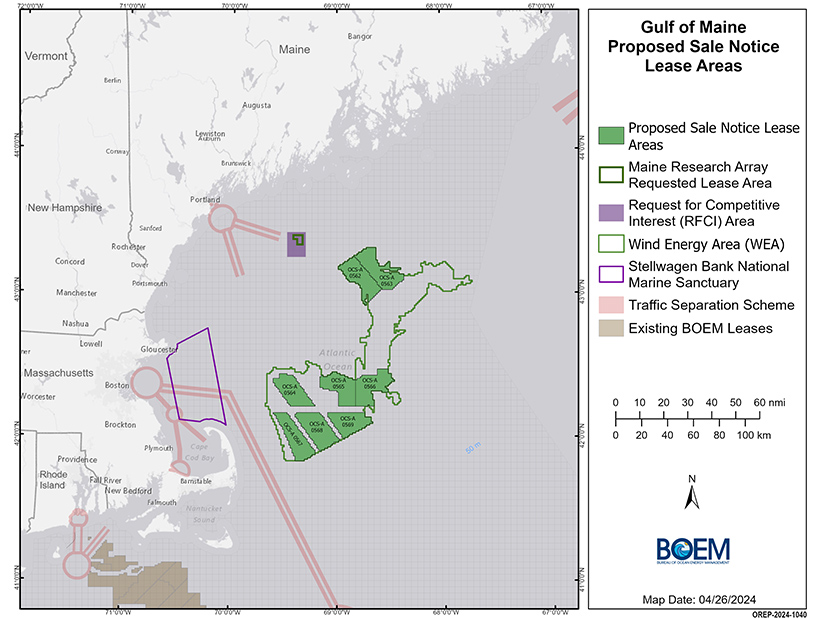
The nation’s first-ever floating offshore wind research lease has been issued to Maine.
The U.S. Bureau of Ocean Energy Management announced the decision Aug. 19, paving the way for placement of up to 12 floating turbines with a combined rating of up to 144 MW.
Construction is not expected to start for several years. The state first must draw up a research activities plan, then BOEM must perform an environmental analysis on it.
Offshore wind turbines have been built for more than 30 years on foundations affixed to the seabed in shallow water but only now are turbines on floating towers beginning to be deployed in deeper waters, and the design of the towers and anchoring systems is a work in progress.
Maine aspires to be a leader in the floating wind sector. Much of the Gulf of Maine is too deep for fixed-bottom turbine foundations.
The University of Maine has been working for years to refine floating foundation designs.
For commercial purposes, BOEM sold five floating wind leases off the California coast in a December 2022 auction and plans to offer eight in the Gulf of Maine in an auction in late 2024. But the lease announced Aug. 19 was the first for the purpose of researching floating wind.
Some commercial wind leases have drawn bids in the range of hundreds of millions of dollars, but BOEM awarded lease OCS-A 0553 to Maine at no cost.
Maine has designated Pine Tree Offshore Wind LLC, an affiliate of New England Aqua Ventus LLC, as the operator for the research lease. Aqua Ventus began utility power purchase agreement negotiations before the Maine Public Utilities Commission (Case 2022-00100) in April 2022.
Maine Gov. Janet Mills (D) said in a prepared statement Aug. 19 that the research array, as proposed, will use floating platform technology development by the University of Maine and deployed by its development partner, Diamond Offshore Wind.
“This lease between the state and BOEM to support the nation’s first research array devoted to floating offshore wind technology is the result of extensive engagement with stakeholders and communities across our state to establish Maine as a leader in responsible offshore wind, in balance with our state’s marine economy and environment,” she said.
BOEM in its news release said the research project goes beyond Maine’s ambitions, allowing the wind energy industry, fishing community, wildlife experts, governments and others to evaluate floating wind as a renewable energy source in the Northeast, and to evaluate its impacts.
Maine first requested a research lease in October 2021, and the request went through revisions during the review process. The awarded lease area totals nearly 15,000 acres, about 28 nautical miles southeast of Portland.
The upper limits specified in the floating research lease — 12 turbines and 144 MW — potentially put the project on the scale of the first completed wind farm in U.S. waters: South Fork Wind, a fixed-bottom project whose 12 turbines are rated at 132 MW.


